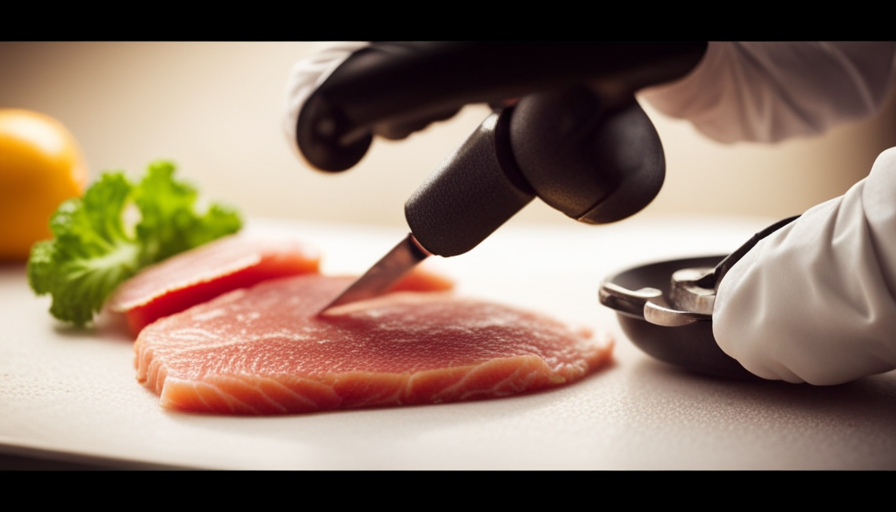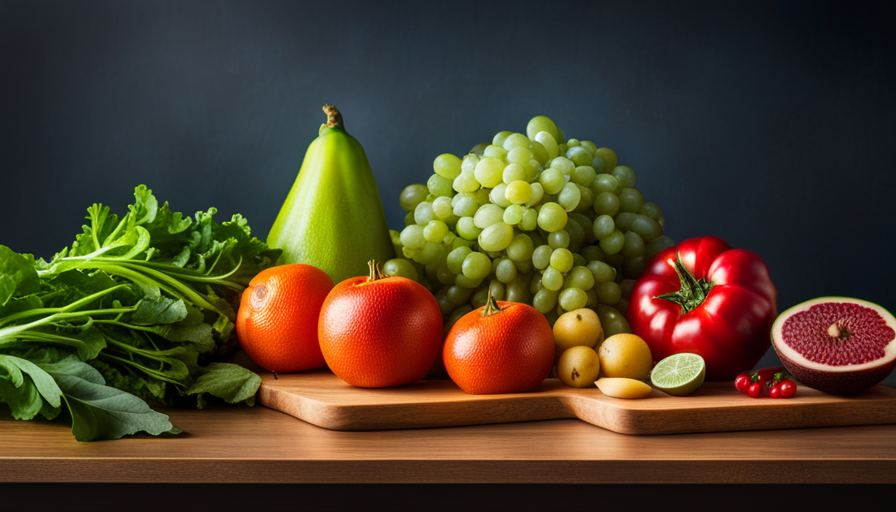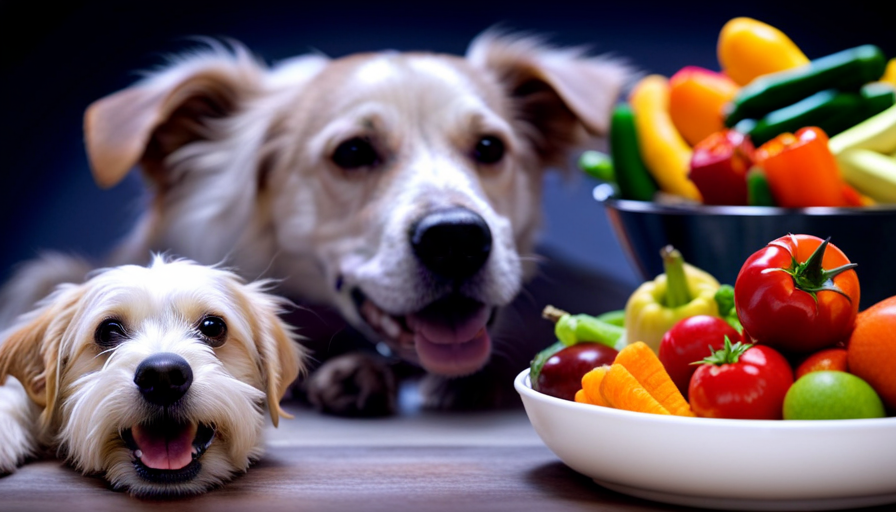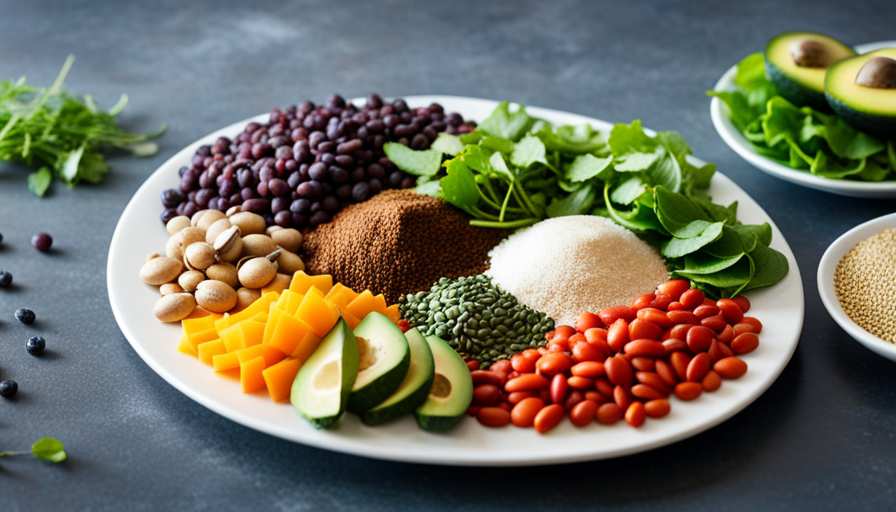Did you know that about 48 million Americans experience foodborne illnesses every year? One effective way to lower the chances of getting sick is by using a kill step when handling raw food. A kill step is an essential method that kills off dangerous bacteria and pathogens in your food, ensuring it is safe to eat.
In this article, you will learn everything you need to know about conducting a kill step for raw food. From understanding the risks of consuming raw food to properly handling and storing ingredients, we will guide you through each step to ensure food safety. We will also explore the importance of choosing high-quality and fresh ingredients, as well as washing and sanitizing utensils and preparation surfaces.
Additionally, we will delve into the significance of using proper food temperature control measures and incorporating acidic ingredients for enhanced safety.
By following these comprehensive guidelines, you will be equipped with the knowledge and tools to conduct a kill step effectively, safeguarding yourself and your loved ones from potential foodborne illnesses. So, let’s dive in and make sure your raw food is safe to eat!
Key Takeaways
- Different cooking techniques such as grilling, broiling, frying, boiling, and steaming can be used to kill bacteria in raw food.
- Using acidic ingredients like citrus juices and vinegars can lower the pH level of food, creating an inhospitable environment for bacteria.
- Marinating raw food should be done in a refrigerated environment below 40°F (4°C) to prevent bacterial growth.
- High-Pressure Processing (HPP) is a technique that utilizes pressure to destroy bacteria, molds, and yeasts without heat or chemicals.
Understanding the Risks of Consuming Raw Food
You need to understand the serious risks involved in consuming raw food, as it can put your health and well-being in grave danger. While some people believe that eating raw food has numerous benefits, such as preserving the nutrients and enzymes that can be lost during cooking, it is essential to be aware of the potential dangers.
Raw food can contain harmful bacteria, parasites, and viruses that can cause foodborne illnesses.
Exploring alternative methods of food preparation is crucial to ensure the safety of raw food consumption. One common method is the kill step, which involves applying heat or other treatments to eliminate pathogens. For example, you can blanch vegetables by briefly immersing them in boiling water, followed by an immediate plunge into ice water. This kills any bacteria present on the surface while maintaining the raw texture and flavor.
It is also important to consider the source of the raw food. Make sure to purchase it from reputable suppliers who follow strict hygiene practices. Additionally, proper storage and handling of raw food are essential to prevent contamination.
Understanding the risks associated with consuming raw food is vital for your health and well-being. By exploring alternative methods of food preparation and ensuring proper sourcing, storage, and handling, you can minimize the potential dangers and enjoy the benefits of raw food consumption safely.
Proper Handling and Storage of Raw Ingredients
When properly handling and storing your ingredients, it’s essential to ensure they’re stored at the correct temperature to maintain their freshness and prevent spoilage. Follow these storage guidelines to keep your raw ingredients safe and reduce the risk of cross-contamination:
-
Keep raw meats and seafood separate from other ingredients: This prevents any potential bacteria from spreading to other foods, reducing the risk of foodborne illnesses.
-
Store raw ingredients in sealed containers: This helps to maintain their freshness and prevents any potential cross-contamination with other foods in the refrigerator.
-
Use separate cutting boards and utensils for raw ingredients: This further prevents cross-contamination by ensuring that bacteria from raw ingredients doesn’t come into contact with ready-to-eat foods.
-
Regularly clean and sanitize your storage areas: This includes refrigerators, countertops, and cutting boards. Proper cleaning and sanitizing helps to eliminate any bacteria that may be present and reduces the risk of cross-contamination.
By following these storage guidelines and practicing proper handling techniques, you can ensure the safety of your raw ingredients and reduce the risk of foodborne illnesses. Remember, maintaining a clean and organized kitchen is key to preventing cross-contamination and maintaining the freshness of your ingredients.
Choosing High-Quality and Fresh Ingredients
To ensure you’re selecting high-quality and fresh ingredients, imagine wandering through a bustling farmers market, where vibrant fruits and vegetables beckon with their vibrant colors and enticing aromas, promising a burst of flavor in every bite. When it comes to selecting fresh produce, there are a few key things to keep in mind. Firstly, pay attention to the appearance of the fruits and vegetables. Look for items that are firm, with no soft spots or blemishes. The color should be vibrant and uniform, indicating freshness. Secondly, don’t forget to check the expiration dates on packaged ingredients, such as meats or dairy products. This simple step can help ensure that you’re purchasing items that haven’t exceeded their shelf life. To further emphasize the importance of selecting fresh ingredients, refer to the table below:
| Signs of Fresh Produce | Signs of Spoiled Produce |
|---|---|
| Firm texture | Soft spots |
| Vibrant color | Mold |
| Pleasant aroma | Foul odor |
By following these guidelines and paying attention to the quality and freshness of your ingredients, you can ensure that the kill step for your raw food will be effective and safe.
Washing and Sanitizing Utensils and Preparation Surfaces
Imagine a sparkling clean kitchen, with gleaming utensils and pristine preparation surfaces, ready to ensure the safety and cleanliness of your food. When it comes to conducting a kill step for raw food, one crucial aspect is washing and sanitizing utensils and preparation surfaces.
Proper washing techniques and sanitizing methods are essential to eliminate any harmful bacteria or contaminants that may be present. Start by washing your utensils and preparation surfaces with hot, soapy water. Make sure to scrub all areas thoroughly, including handles and crevices where bacteria can hide. Rinse the items well to remove any soap residue.
After washing, it is crucial to sanitize the utensils and surfaces to further eliminate any remaining bacteria. You can use a sanitizing solution, such as a mixture of bleach and water, following the recommended ratios provided by health authorities. When sanitizing, ensure that the solution comes into contact with all surfaces. Let it sit for the recommended contact time before rinsing with clean water. Remember to change the sanitizing solution regularly to maintain its effectiveness.
Additionally, consider using separate cutting boards for different types of food to prevent cross-contamination. By following these washing techniques and sanitizing methods, you can create a safe and hygienic environment in your kitchen, reducing the risk of foodborne illnesses.
Using Proper Food Temperature Control Measures
Maintaining proper food temperature control is crucial in ensuring the safety and freshness of your meals, so don’t let your ingredients become a hot mess! By implementing safe food handling techniques and closely monitoring the temperature of your food, you can reduce the risk of foodborne illnesses and keep your dishes delicious.
To effectively control food temperature, here are some important tips to keep in mind:
-
Use a food thermometer: Invest in a reliable food thermometer to accurately measure the internal temperature of your food. This will help you determine if it’s reached the appropriate temperature for safe consumption.
-
Store perishable foods properly: Keep raw meats, poultry, and seafood refrigerated at a temperature below 40°F (4°C) to prevent bacterial growth. Likewise, store cooked foods at a temperature above 140°F (60°C) to maintain their freshness.
-
Avoid the temperature danger zone: Never leave perishable foods at room temperature for more than two hours, as this is the range where bacteria can multiply rapidly.
-
Cook to the right temperature: Different types of food require specific internal temperatures to be considered safe. Use a food thermometer to ensure your dishes are cooked thoroughly.
-
Reheat properly: When reheating leftovers or cooked foods, make sure they reach an internal temperature of 165°F (74°C) to eliminate any bacteria that may have grown during storage.
By following these food temperature control measures and safe handling techniques, you can ensure your meals are both safe and delicious. So, be vigilant and keep your food at the right temperature to protect your health and enjoy your dining experience to the fullest.
Employing Cooking Techniques to Eliminate Harmful Bacteria
Now that you understand the importance of using proper food temperature control measures, let’s delve into the next step of conducting a kill step for raw food: employing cooking techniques to eliminate harmful bacteria. By using the right cooking methods, you can ensure the safety of your food and protect yourself and others from foodborne illnesses.
Cooking is an effective way to kill bacteria because it raises the temperature of the food to levels that are lethal for most harmful microorganisms. Different cooking techniques can be used depending on the type of food you are preparing. For example, grilling, broiling, and frying are great options for meats, as they expose the food to high heat, effectively eliminating bacteria. Boiling and steaming are ideal for vegetables and seafood, as these methods can reach high temperatures and kill any potential pathogens.
To help you understand the various cooking techniques and their recommended temperatures, here is a handy table:
| Cooking Technique | Recommended Temperature |
|---|---|
| Grilling | 145°F |
| Broiling | 145°F |
| Frying | 165°F |
| Boiling | 212°F |
| Steaming | 160°F |
By following these guidelines and employing the appropriate cooking techniques, you can confidently eliminate harmful bacteria and ensure the safety of your meals. Remember, thorough cooking is crucial to protecting yourself and your loved ones from foodborne illnesses.
Incorporating Acidic Ingredients for Food Safety
Incorporating acidic ingredients into your cooking can be a game-changer when it comes to ensuring food safety. Not only do acidic ingredients add a burst of flavor to your dishes, but they also play a crucial role in eliminating harmful bacteria.
By incorporating acidic ingredients, you create an environment that is unfavorable for bacterial growth. One of the benefits of using acidic ingredients is their ability to lower the pH level of the food. Bacteria thrive in neutral pH environments, but when you introduce acidity, you create an inhospitable environment for them. This helps to prevent the growth of bacteria such as Salmonella or E. coli, which can cause foodborne illnesses.
Acidic ingredients also have antimicrobial properties that can further aid in killing bacteria. For example, citrus juices like lemon or lime contain citric acid, which is effective in inhibiting the growth of bacteria. Vinegars, such as apple cider or white vinegar, contain acetic acid, which has been shown to have antimicrobial activity as well.
Incorporating acidic flavors into your meals not only enhances the taste but also adds an extra layer of food safety. By using ingredients like citrus juices, vinegars, or even yogurt, you can ensure that your dishes not only pack a punch in flavor but also maintain high standards of food safety.
So, next time you’re in the kitchen, don’t forget to add a splash of acidity to your cooking for both taste and safety.
Properly Marinating and Curing Raw Food
Are you wondering how to ensure the safety of your marinated and cured dishes? Properly marinating and curing raw food is crucial in preventing foodborne illnesses and ensuring the deliciousness of your meals. Let’s dive into some marinating techniques and curing methods that you can follow to achieve both safety and flavor in your dishes.
Marinating is the process of soaking food in a flavorful liquid, known as a marinade, to enhance its taste and tenderness. To marinate raw food safely, it is important to keep it refrigerated at a temperature below 40°F (4°C) to prevent bacterial growth. Additionally, always marinate in a food-safe container and discard any leftover marinade that has come into contact with raw meat or seafood.
Curing, on the other hand, involves using salt, sugar, and other ingredients to preserve and flavor raw food. When curing meats, it is essential to use the correct ratio of salt and sugar to prevent bacterial growth. Additionally, ensure that the curing process takes place in a clean and controlled environment to avoid contamination.
To further illustrate the marinating techniques and curing methods, take a look at the table below:
| Marinating Techniques | Curing Methods |
|---|---|
| 1. Acidic marinades | 1. Dry curing |
| 2. Enzymatic marinades | 2. Wet curing |
| 3. Oil-based marinades | 3. Brining |
By following these marinating techniques and curing methods, you can create safe and flavorful dishes that will tantalize your taste buds. Remember to always prioritize food safety when handling raw food to prevent any potential health risks.
Utilizing High-Pressure Processing (HPP) for Safety
Utilizing High-Pressure Processing (HPP) can be a game-changer in ensuring the safety of your dishes. It provides an innovative method that goes beyond traditional techniques. HPP equipment utilizes high levels of pressure to eliminate harmful bacteria and extend the shelf life of raw food.
HPP works by applying pressure evenly to the food, effectively destroying bacteria, molds, and yeasts without the use of heat or chemicals. This process helps to preserve the natural flavor, texture, and nutritional value of the food. Furthermore, HPP can be used to validate the kill step for raw food, ensuring that it meets safety standards.
To utilize HPP, you will need specialized HPP equipment. This equipment consists of a pressure vessel, which is filled with water, and a high-pressure pump to generate the required pressure. The raw food is placed in a flexible package and submerged in the water-filled vessel. Once sealed, the vessel is pressurized, subjecting the food to high levels of pressure for a specific duration of time.
It is important to validate the HPP process to ensure its effectiveness in killing harmful bacteria. This involves conducting microbiological testing to confirm that the desired reduction in bacteria has been achieved. Regular monitoring and validation of the HPP process are key to maintaining food safety standards.
By utilizing HPP equipment and conducting proper process validation, you can confidently ensure the safety of your raw food dishes, providing peace of mind to both you and your customers.
Regularly Testing and Monitoring for Foodborne Pathogens
Make sure you regularly test and monitor for foodborne pathogens to protect your dishes like a vigilant guardian safeguarding the health of your customers. By implementing rigorous testing methods and conducting regular risk assessments, you can ensure a safe and hygienic environment for food preparation.
Here are four key steps to follow:
-
Sampling: Collect samples from various stages of food production, including raw materials, processing equipment, and finished products. This will help identify potential sources of contamination and evaluate the effectiveness of your safety measures.
-
Microbiological Analysis: Utilize advanced testing techniques to detect the presence of harmful microorganisms such as Salmonella, E. coli, and Listeria. These tests can provide valuable insights into the safety of your food products and help you take appropriate corrective actions if necessary.
-
Environmental Monitoring: Regularly monitor the cleanliness of your production area and equipment. This includes swabbing surfaces and equipment for microbial analysis to identify any potential sources of contamination and ensure proper sanitation practices.
-
Ongoing Risk Assessment: Continuously evaluate and update your risk assessment plan to identify any new potential hazards or changes in your production process that may increase the risk of foodborne illnesses. This will allow you to implement necessary preventive measures and maintain the highest standards of food safety.
By following these testing methods and conducting thorough risk assessments, you can proactively protect your customers from foodborne pathogens and maintain their trust in your establishment.
Frequently Asked Questions
Can I use a microwave or a slow cooker as a kill step for raw food?
Using a microwave or a slow cooker as a kill step for raw food can be risky. While microwaves are generally safe for cooking, they may not be effective in fully killing harmful bacteria in raw food. Slow cookers, on the other hand, aren’t designed to reach the necessary temperatures to eliminate bacteria.
It’s important to prioritize food safety and use proper cooking methods, such as cooking raw food to the recommended internal temperature, to ensure that all harmful bacteria are killed.
Are there any specific types of raw food that are more susceptible to bacterial contamination?
Certain types of raw food are more susceptible to bacterial contamination. This includes raw meats, poultry, seafood, and unpasteurized dairy products. These foods can harbor harmful bacteria like Salmonella, E. coli, and Listeria.
It’s important to handle and store these raw foods properly to minimize the risk of bacterial contamination. This includes keeping them at the right temperature, separating them from other foods, and practicing good hygiene during preparation and cooking.
Raw food safety is crucial to prevent foodborne illnesses caused by bacterial contamination.
How long should I let raw food sit at room temperature before cooking it?
To ensure room temperature safety and proper raw food handling, it’s important to minimize the time raw food sits out before cooking. Bacteria can multiply rapidly in the ‘danger zone’ between 40°F and 140°F.
Ideally, raw food shouldn’t be left at room temperature for more than 2 hours. For perishable items like meat, seafood, and dairy, it’s recommended to refrigerate them promptly if they’re not going to be cooked immediately.
Can I use a meat thermometer to ensure that raw food has reached a safe internal temperature?
To ensure raw food has reached a safe internal temperature, using a meat thermometer is a reliable method. Insert the thermometer into the thickest part of the food, away from any bones or fat, and wait for the reading.
For poultry, the internal temperature should be 165°F (74°C), while for beef, pork, and fish, it should be 145°F (63°C).
Alternatively, you can also use visual cues like clear juices, firm texture, and no pink or translucent areas to gauge if the food is cooked thoroughly.
Are there any alternative methods to high-pressure processing (HPP) for ensuring the safety of raw food?
To ensure the safety of raw food, there are alternative methods to high-pressure processing (HPP). One such method is thermal processing, which involves subjecting the food to high temperatures for a specific amount of time. This kills any harmful bacteria or pathogens present in the raw food.
Another method is irradiation, where the food is exposed to ionizing radiation to eliminate microorganisms. Both these alternative methods are effective in ensuring raw food safety.
Is it Necessary to Conduct a Kill Step for Raw Food Left in a Crock Pot?
Yes, it is necessary to conduct a kill step for raw food left in a crock pot in order to ensure that any harmful bacteria are eliminated. Properly decontaminating crock pot from raw food with high heat will help prevent foodborne illnesses and keep your meals safe to eat.
Conclusion
Congratulations! You’ve made it to the end of this raw food adventure. Now, armed with all the knowledge on how to conduct a kill step for raw food, you can confidently navigate the culinary world like a pro.
Remember, handling raw ingredients with care, using proper temperature control, and incorporating acidic ingredients are your secret weapons against foodborne pathogens.
So go forth and conquer the kitchen, knowing that you have the power to create delicious and safe meals. Bon appétit!










